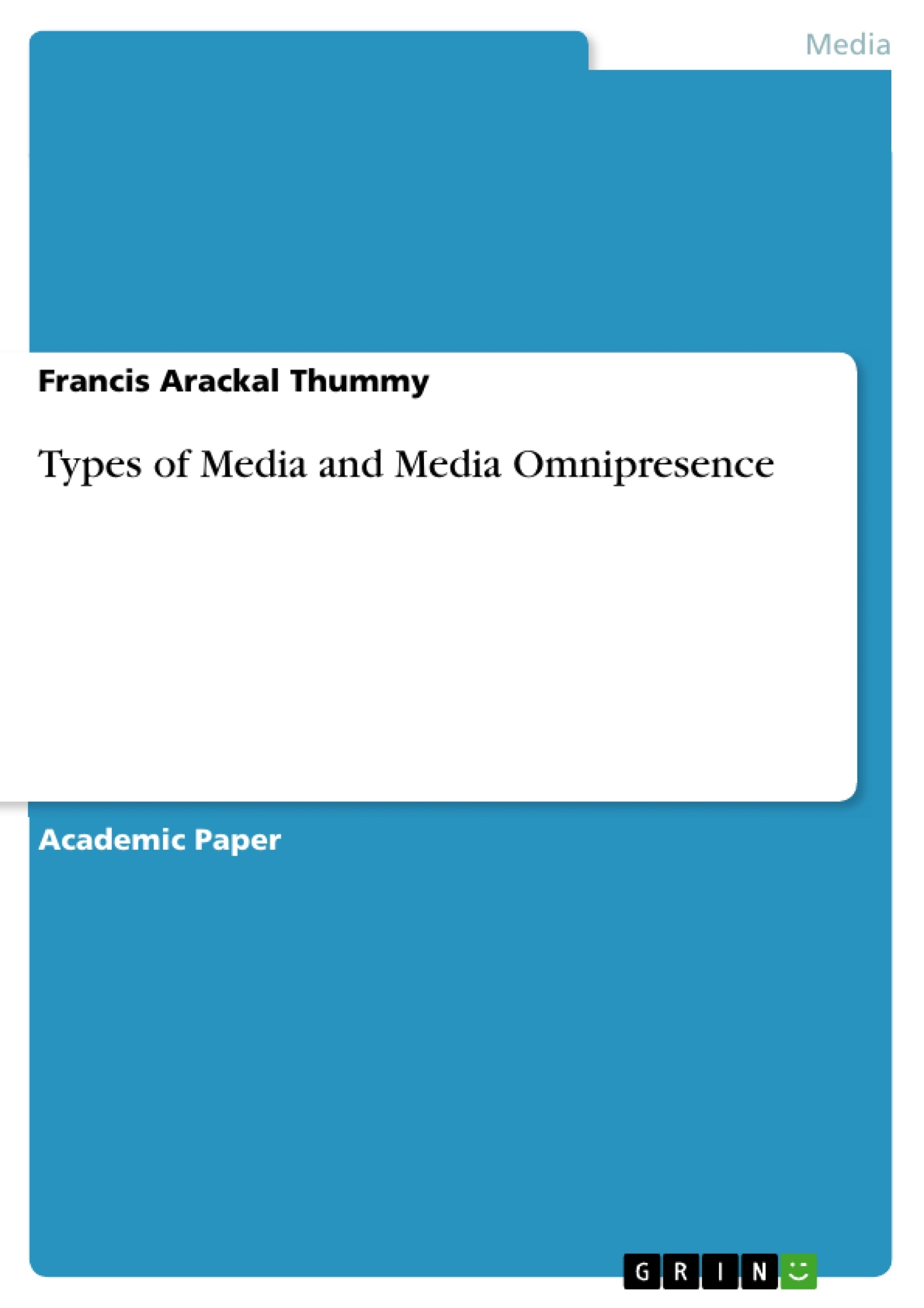The omnipotence of mass media was already felt in the beginning of the twentieth century even though the main media present were only newspapers, magazines and radio. Of course, media attained the status of a religion only with the arrival of television – family altars were replaced with the “idiot box”; television,“the big medium”, by the end of the twentieth century became the surrogate parent, teacher and god. And then the omnipresence of the media was felt with the launching ofthe internet enabling instant social networking. It should be noted here that in the age of media convergence information technology has to be considered integral to media operations. FB, Twitter, Whatsapp, Pintrest, Instagram … would be rendered ineffective without the internet. FB has captured the imagination of more than 1.5 billion people, one hundred million and growing in India alone. Twitter and Whatsapp are catching up. In the early 21 century the world moved beyond the “global village” ending up as a “global living room”. No wonder Alexander Bard, the prophet who calls for triumph of the ‘netocracy’ in his latest book ‘Syntheism – Creating God in the Internet Age’, speaks of the internet as the new Holy Spirit. Indeed with the New Media a new culture, religion, sanctuary idols and priesthood are emerging.
Table of Contents
- Introduction
- Clarifying Media Terms
- Communication and Medium
- Traditional Mass Media
- Newspapers
- Magazines
Objectives and Key Themes
This text explores the omnipresence and impact of media in the modern world, focusing on its evolution from traditional forms to the internet age. It examines the concept of media as a “message” and the role of technology in shaping communication.
- The evolving landscape of media from traditional forms to the digital age.
- The role of technology in shaping communication and its impact on society.
- The power and influence of media in shaping culture, values, and information dissemination.
- The concept of media as a “message” and its implications for understanding communication.
- The convergence of media forms and the emergence of new communication paradigms.
Chapter Summaries
The first chapter introduces the concept of media and its history, tracing its development from early forms of communication to the present day. It discusses the significance of Gutenberg's invention of the printing press and the subsequent evolution of media technologies. It also explores Marshall McLuhan's concept of the “Global Village” and its relevance to the rise of the internet.
The second chapter defines key media terms, particularly "communication" and "medium." It explores different types of media, including presentational, representational, and mechanical media. It also examines the idea that the “medium is the message” and discusses the characteristics of mass media.
The final chapter examines the traditional mass media, including newspapers, magazines, film, radio, and television. It delves into their history, evolution, and the challenges they face in the digital age.
Keywords
This text focuses on the evolution of media, communication, technology, mass media, traditional media, the internet, social media, and the impact of media on society and culture. Key concepts explored include the "Global Village," the "medium is the message," and the role of technology in shaping communication.
- Arbeit zitieren
- Prof. Francis Arackal Thummy (Autor:in), 2015, Types of Media and Media Omnipresence, München, GRIN Verlag, https://www.hausarbeiten.de/document/1337139


